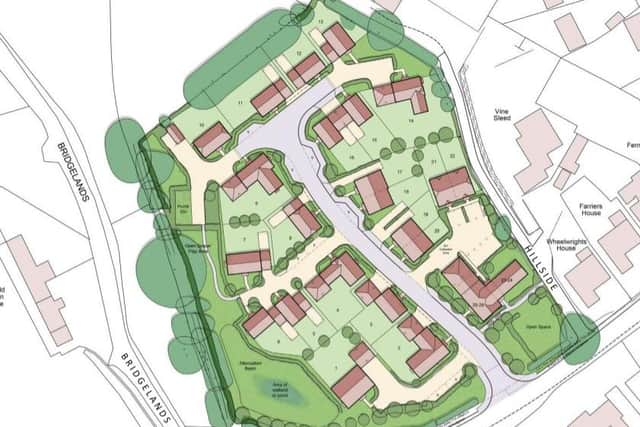Barcombe housing development narrowly approved at second hearing
and live on Freeview channel 276
On Thursday (August 4), Lewes District Council’s planning committee approved an outline application from developer Rydon Homes Limited to build up to 26 homes in Barcombe, on land north of High Street.
An earlier version of the scheme had been considered by council planners in April, but was refused due to concerns around its proposed access road and impact on local ecology.
Advertisement
Hide AdAdvertisement
Hide AdWhile the resubmitted scheme was nearly identical to the refused proposals, the committee ultimately opted to approve the scheme after hearing from officers about how these two issues had been examined in extensive detail.


But for ward councillor Isabelle Linington, the change in view had less to do with the details than it did with an appeal lodged by Rydon Homes putting pressure on the council.
She said: “There are many worrying aspects to this application, including the whole process of dealing with it. The application was rushed on to the agenda today, less than four weeks after being validated.
“The site notice was put in the wrong place, so then the deadline for comments had to be extended to the 6th of August thus the deadline for comments is after this meeting.
Advertisement
Hide AdAdvertisement
Hide Ad“The previously refused application was used in a training session for councillors as an example of an application ‘which should not have been refused’, even though they knew it was likely it would be coming back to you.
“A request for a deferment and an official site visit by the whole committee were refused. Objectors, including myself, were not sent the usual letter informing them of the meeting and the details of how to register to speak.
“It is no wonder that residents have little faith in the planning process or [believe] there is a level playing field in terms of being able to properly object to applications or engage independent experts in the timescale that was imposed.”
Cllr Linington (in common with the majority of objectors) went on to criticise the proposed access arrangements, which would involve the removal of a section of hedgerow.
Advertisement
Hide AdAdvertisement
Hide AdThis, objectors said, would both be unsafe and have an ecological impact by removing a wildlife habitat. Other concerns revolved around the width of footpaths to run alongside the remaining hedge and into the site.
Of these concerns, road safety was the more thorny issue. East Sussex Highways had not raised an objection to the proposals as long as conditions were put in place. These included a condition requiring “frontage development” – i.e. houses on the roadside – so that drivers would have a further visual cue of an upcoming junction.
However, Lewes planning officers argued this would not be a reasonable and legally-sound condition, largely because the final position of the houses would be a reserved matter. Objectors argued this meant the lack of objection from East Sussex Highways could not be relied on.
There was also some argument about how the local plan (which allocates the site for housing) requires the use of an existing access road on Hillside. Officers said this alternative access road could not be safely or adequately delivered, however.
Advertisement
Hide AdAdvertisement
Hide AdPlanning officers also said the hedgerow to be removed had no form of special protection or particular value, partly because it was only around 50-60 years old (although one objector told the LDRS he believed it to be far, far older). It would also be replaced with a newly planted hedge within the site to provide a new and larger wildlife habitat, officers said.
In light of this there was a suggestion – and a significant amount of discussion – from Cllr Richard Turner (Con, Seaford East) around simply removing the hedgerow altogether and planting a new one elsewhere in the site. This, it was argued, would provide a safer and more accessible site, but did not form part of the final proposal.
The committee did add a number of additional conditions, however. These included requirements to use permeable surfaces to avoid flooding, extra restrictions on deliveries during construction and an advisory requesting developers look into further safety measures such as a radar-operated ‘flashing’ speed sign.
Even so the proposal was only approved after the committee’s chairman Sharon Davey used her casting vote to break a tie. The initial count was three votes in favour, three against and four abstentions.
For further details of the proposals see application ref LW/21/0530 on the Lewes District Council website.